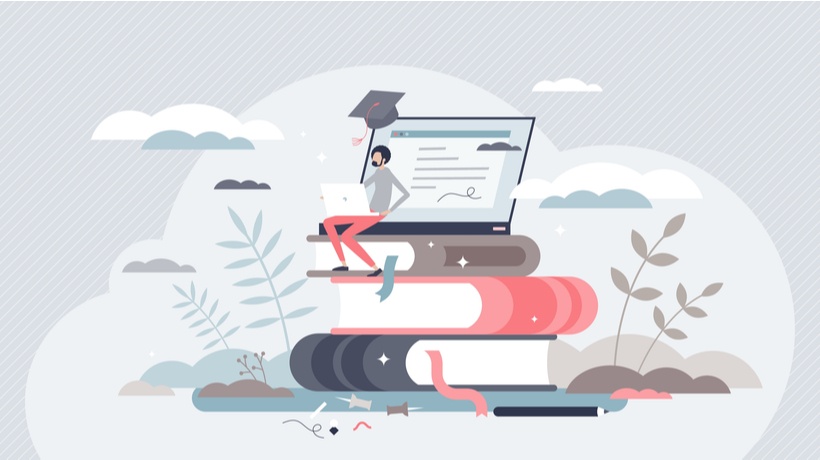Ways eLearning Plays A Role In Improving Government-Run Schools In India
I recently turned into an online instructor launching my first 2 courses on Udemy along with a Youtube channel to teach digital marketing.
Before my course had to go online, I decided to do as much research as possible on how eLearning courses have changed the way education is provided to students, and what the benefits of online courses given through eLearning platforms are. During my research, I came across few articles which provided insights on how schools are adopting latest eLearning methods to improve their education processes and make teaching more interactive.
Schools today are trying every single trick in the book to make learning fun—and eLearning is playing a huge role in this endeavor of theirs. If I was to talk about the implementation of these methods in schools in India, I could quickly pinpoint a few privileged schools in every city that have adopted eLearning in some form or another.
Now, these schools have students from parents who belong to the middle class or above. But India is a country, where the majority of students do not go to private schools. They rely on government schools to provide them with education. Despite years of effort by governments, there has been little or no improvement in the quality of education provided in government schools. The irony is, government schools form the backbone of India's schooling system, and they are a mess.
Here are some facts:
- 65% of all school-going children in 20 states—about 113 million—continue to get their education in government schools.
- Up to the age of 14, school education in government schools is free.
- Despite the Rs 1.16 lakh crore ($17.7 billion) spent on Sarva Shiksha Abhiyan (SSA)—the national program for universal elementary education—the quality of learning declined between 2009 and 2014, IndiaSpend reported in March 2016.
- Less than 1 in 5 elementary school teachers in India are trained, IndiaSpend reported in May 2015. In Delhi, India’s capital city and its richest state according to per capita income, half of all government-school teachers are hired on temporary contracts.
The inference you can make from the above numbers is quite simple:
- The government gives free education up to a decent age which means a lot of students from poor class enroll there.
- Despite government’s best efforts, the education quality has not improved in schools because of various reasons.
- The flagship schemes of government are failing to make an impact at ground level.
India’s public education system is in shambles. The more I think about the current state of government schools in India and how they can be improved, the more I am convinced eLearning is the solution to save them, which brings us to the question:
How Can eLearning Improve The State Of Schools Run By Government?
One of the biggest hurdles for the government to take quality education to the remotest location of the country is the lack of good teachers. Qualified teachers do not want to go to remote locations of the country, and underqualified teachers, who act both as teachers and principals and everything else in their school, are not qualified enough to make a difference. Worse, some of them have been recruited through "corruption" as teacher recruitment scams are quite common in India.
The widespread reach of affordable smartphones can help take the best of courses to the remotest of locations with the help of eLearning through the following processes:
1. Hire The Best Teachers
To start with, the government can hire the best of teachers from private schools to prepare eLearning courses in the state capitals.
As we all are well aware, the course material of schools does not change very frequently. This means it is not an effort which should be done from time to time. In fact, even if there is a change in some chapter on a subject, a newly recorded session could be done for that session. Also, you are not hiring these teachers forever, since they can complete the eLearning course and go back to their schools to go on with their regular jobs.
2. Improve The Course
Once the recording is done, of course, the teachers, along with help of experts who are good with interactive tools, can do the recording and study the material better. More added visual elements to the course can make the course even better.
3. Train The Teachers
Few sessions through the web and the teachers will be required to come to the nearest city with a decent internet connection to take the sessions. These sessions will be enough to train the teachers.
Once the teachers are trained and can clear a simple exam to explain their understanding of the training provided by experts in subjects, they can be given complete offline access to the course on an eLearning solution which can easily be transferred as a package in a CD or via USB.
Once the recording, of course, is done, the course should be made password protected and the teacher should be given a copy of the complete learning module.
4. Take The Course To Students
The course can be transferred to smartphones of student’s parents by connecting their phones to the computer of teachers provided to them in school.
(Note: smartphones are no more a luxury in India. Affordable smartphones are available to everyone in the country. As per the last survey, there are 299.24 million smartphone users in India).
Students who can connect to the internet through a unique password and ID provided to them along with the course can also get access to live exercises, quizzes, etc.
How does the above model help government schools?
- The load on single teacher teaching all subjects and taking classes for all subjects is reduced drastically.
- Quality lectures are provided to all the students.
- Teachers who are themselves lagging in the knowledge of subjects get a chance to improve their skill-set by learning from the best.
- The government can keep a quality check on the course material produced in the capital city of their state by ensuring courses produced are not only through experience teachers but are also developed with a right mix of visual experience to help students better relate to them.
The internet is soon reaching doorsteps of every house in India. The model I have suggested above works minus the internet; but with the internet, the possibilities of making education better are limitless. For example, imagine live webinars or discussions on new topics for students. India’s public education system needs an overhaul and eLearning is the only medium I can see improving the current status of education provided by government schools in India.









